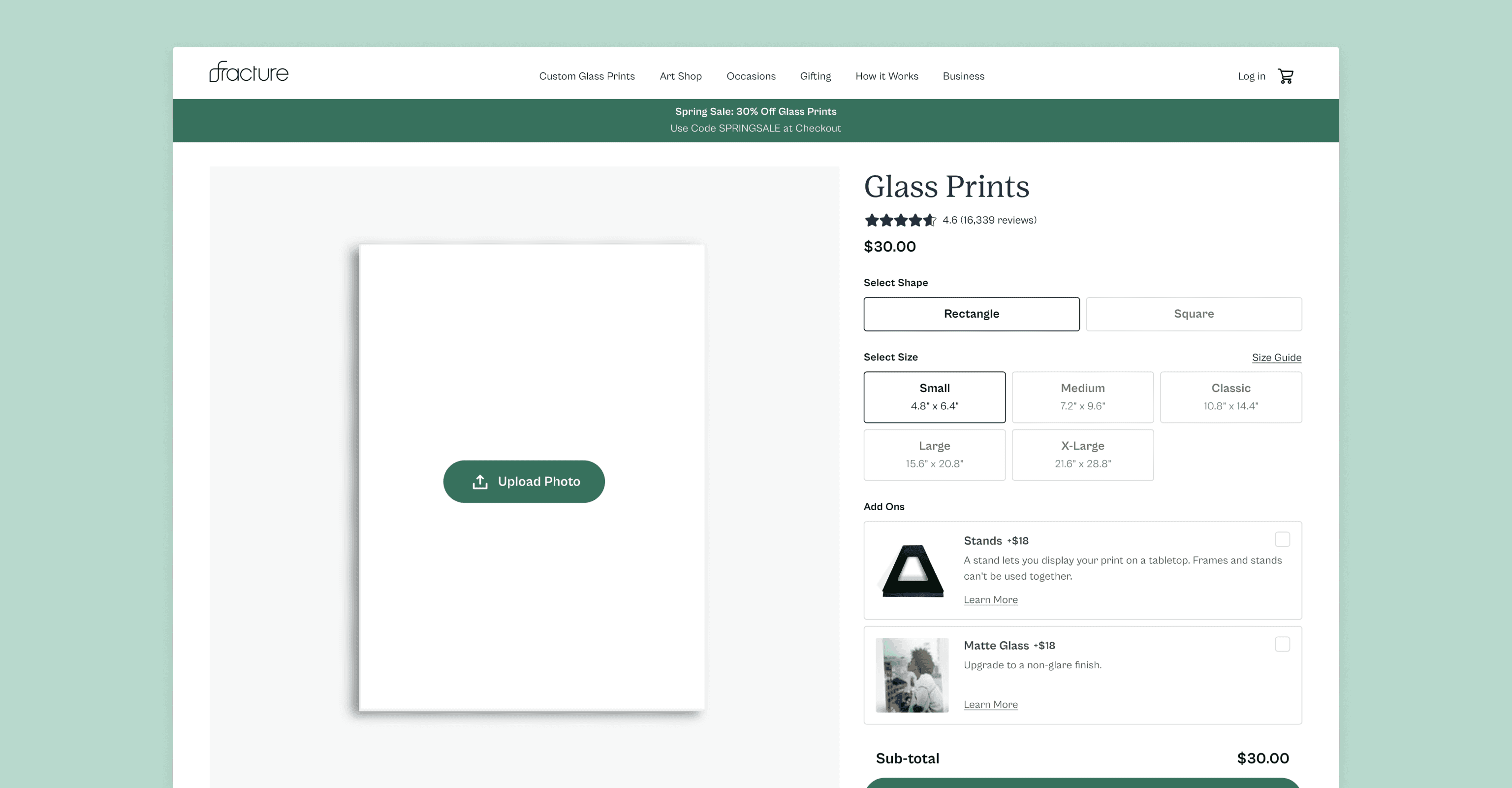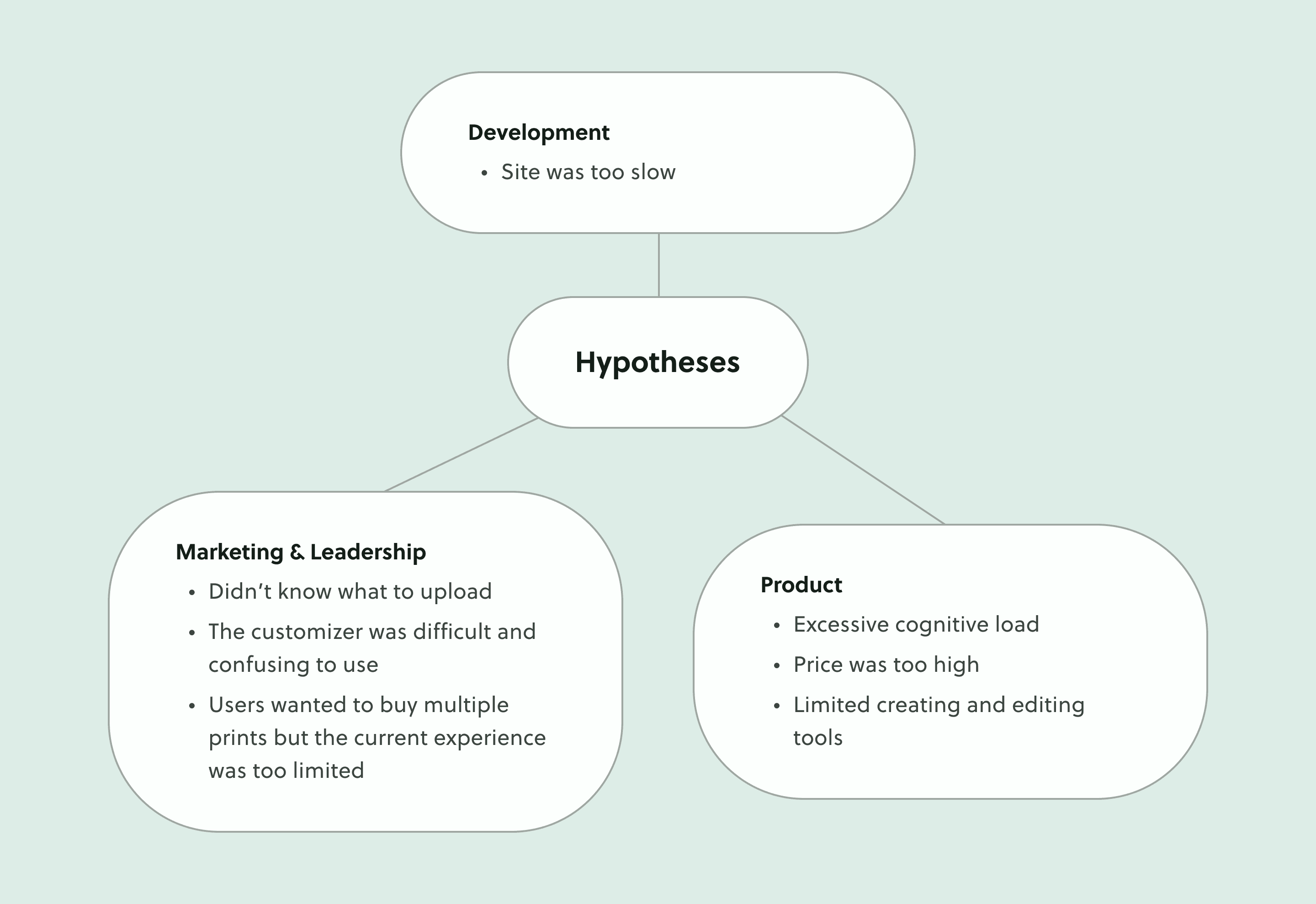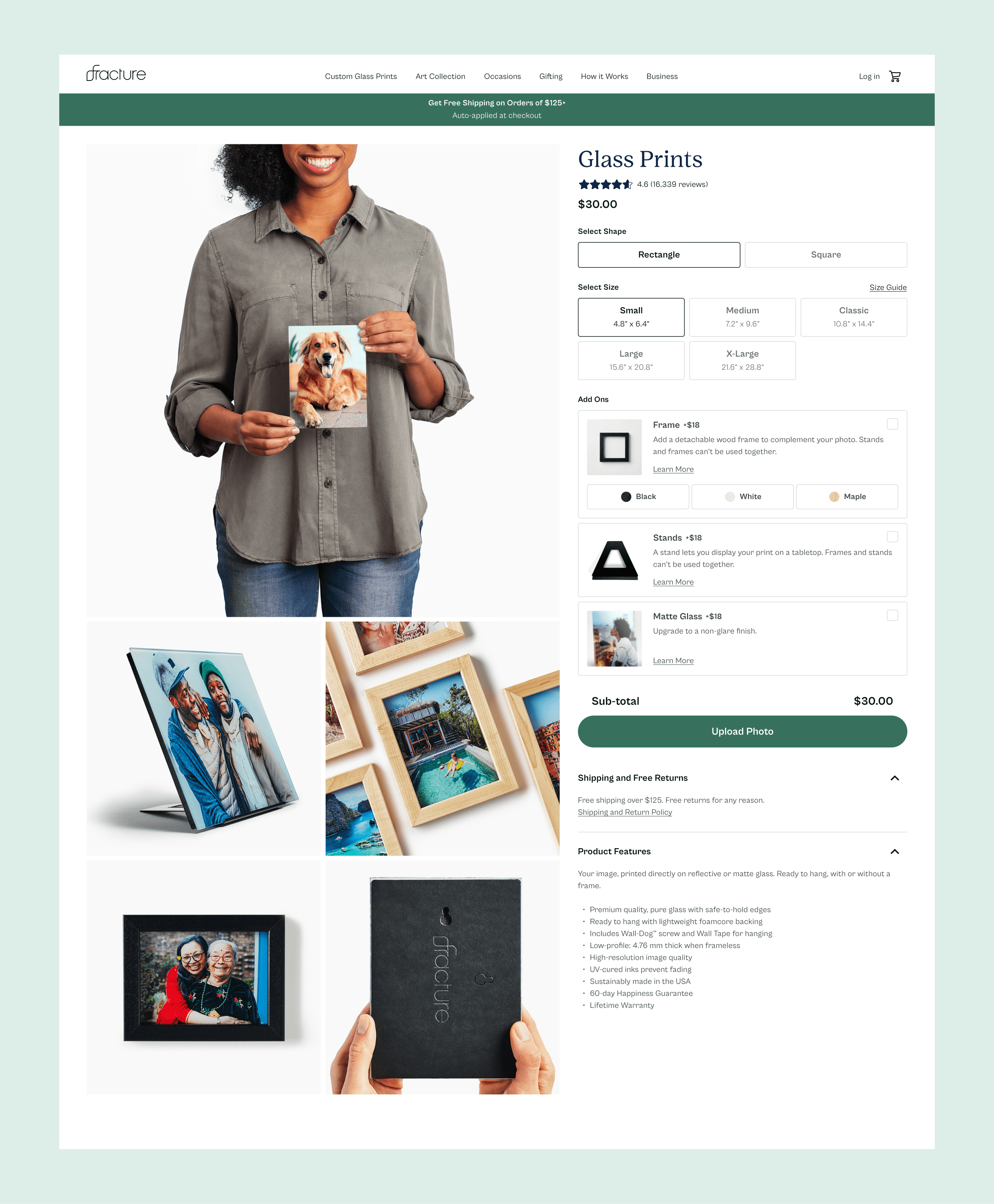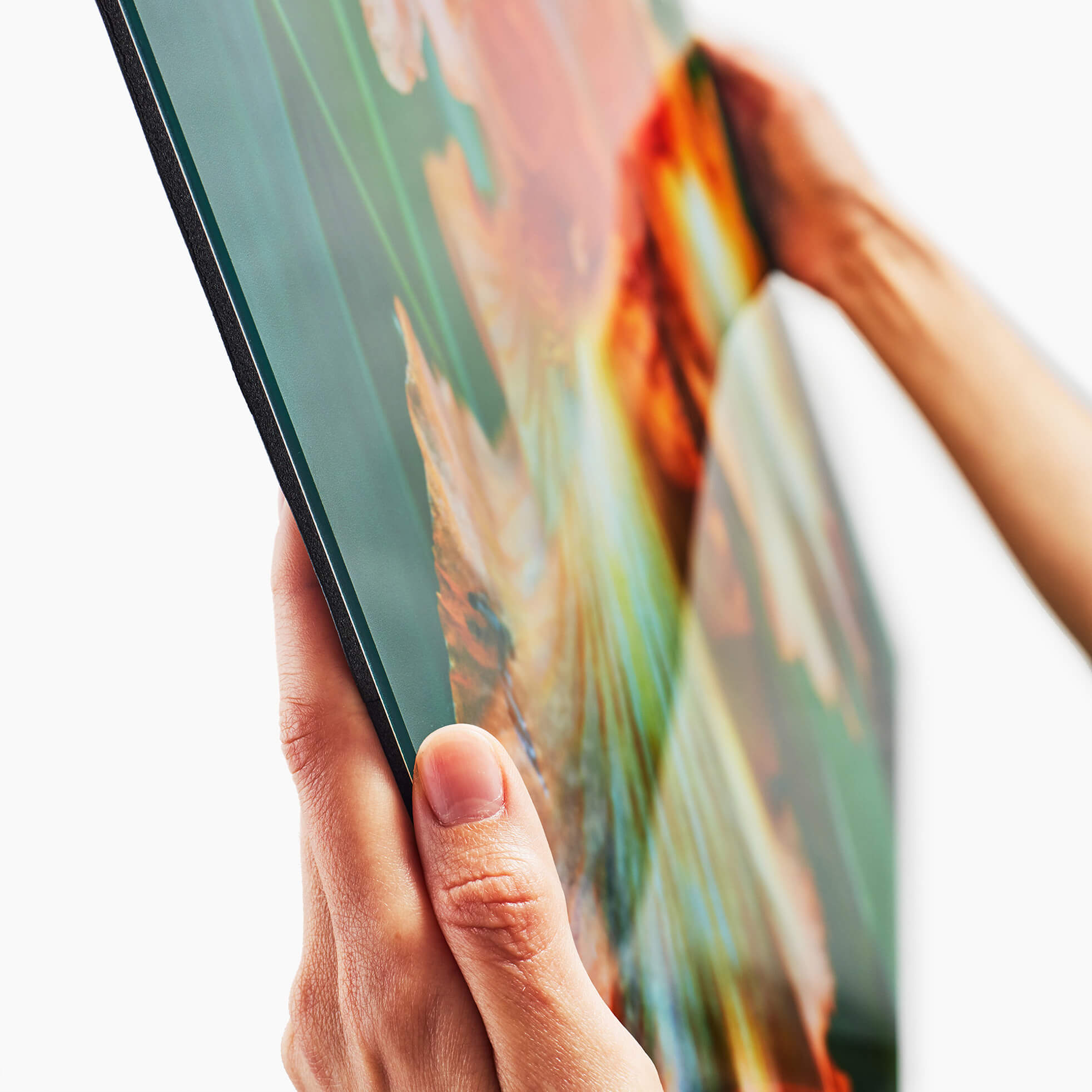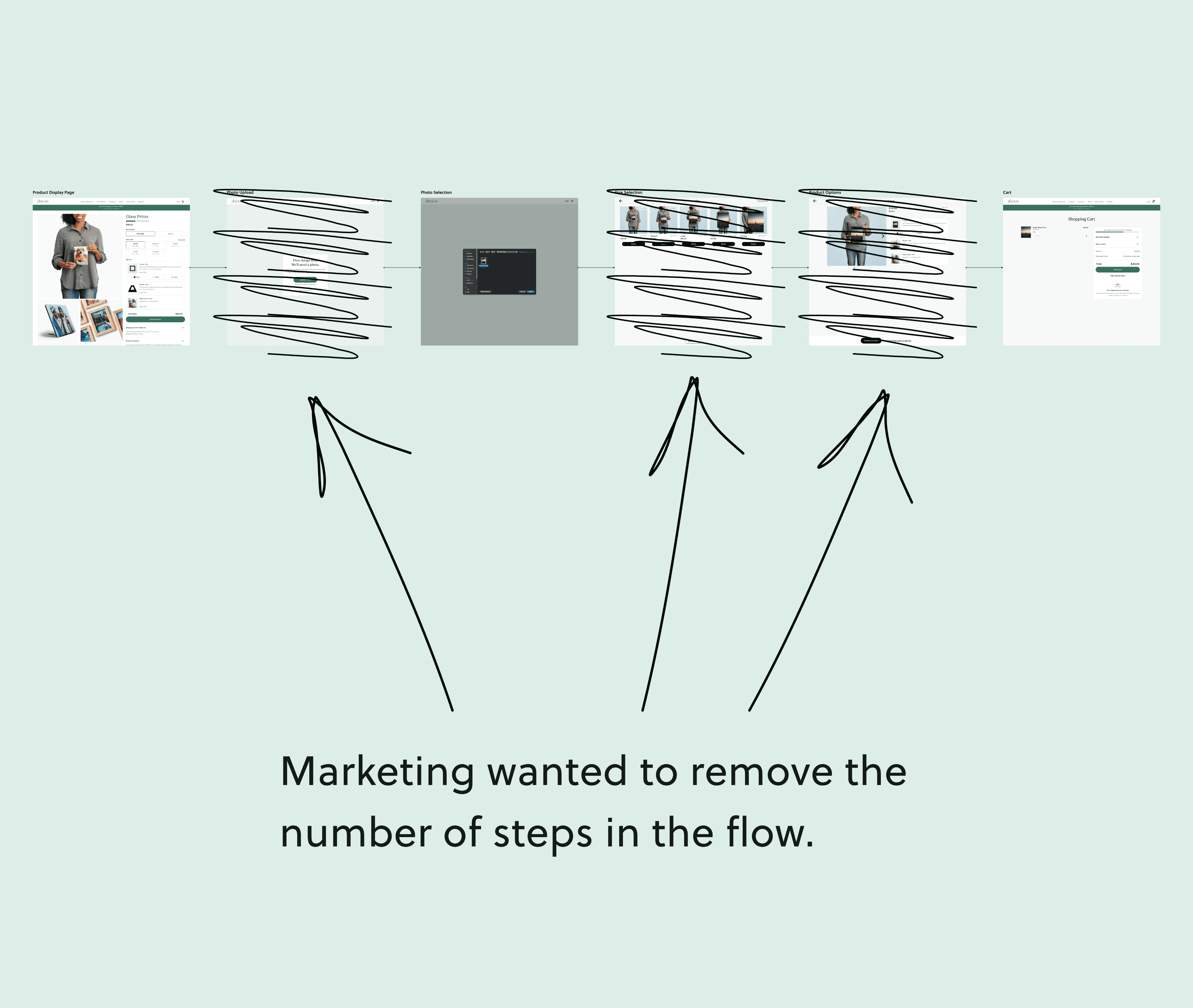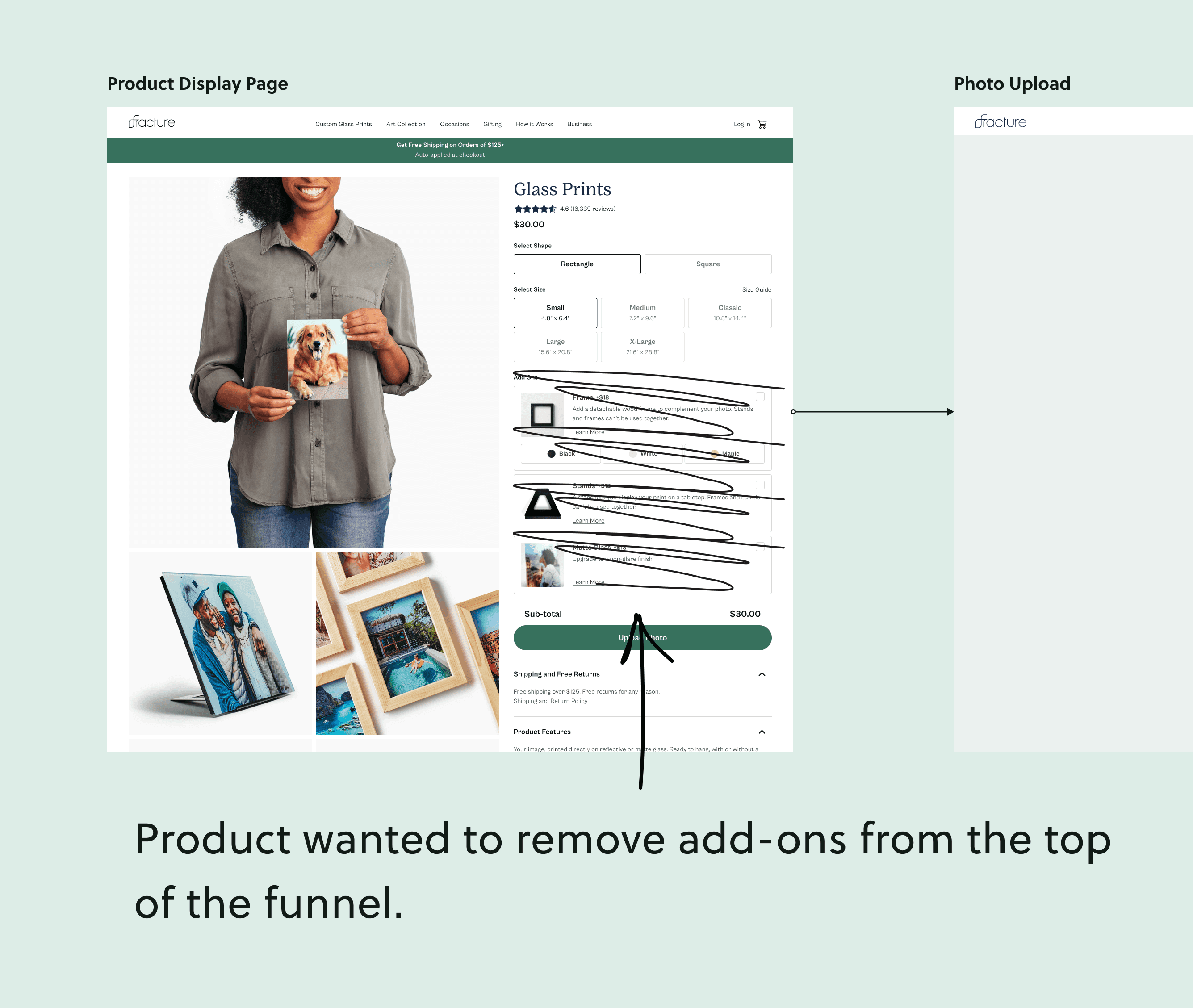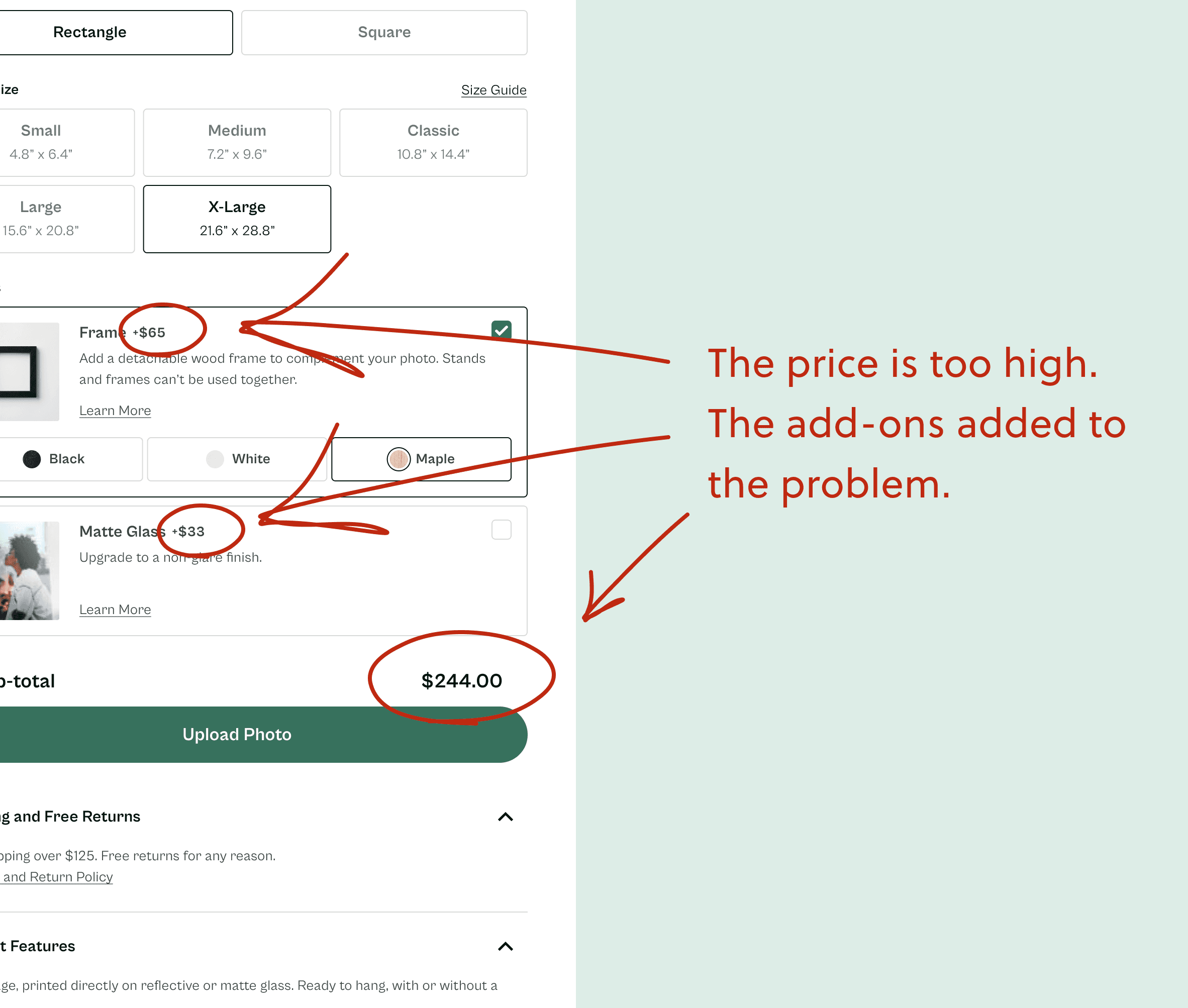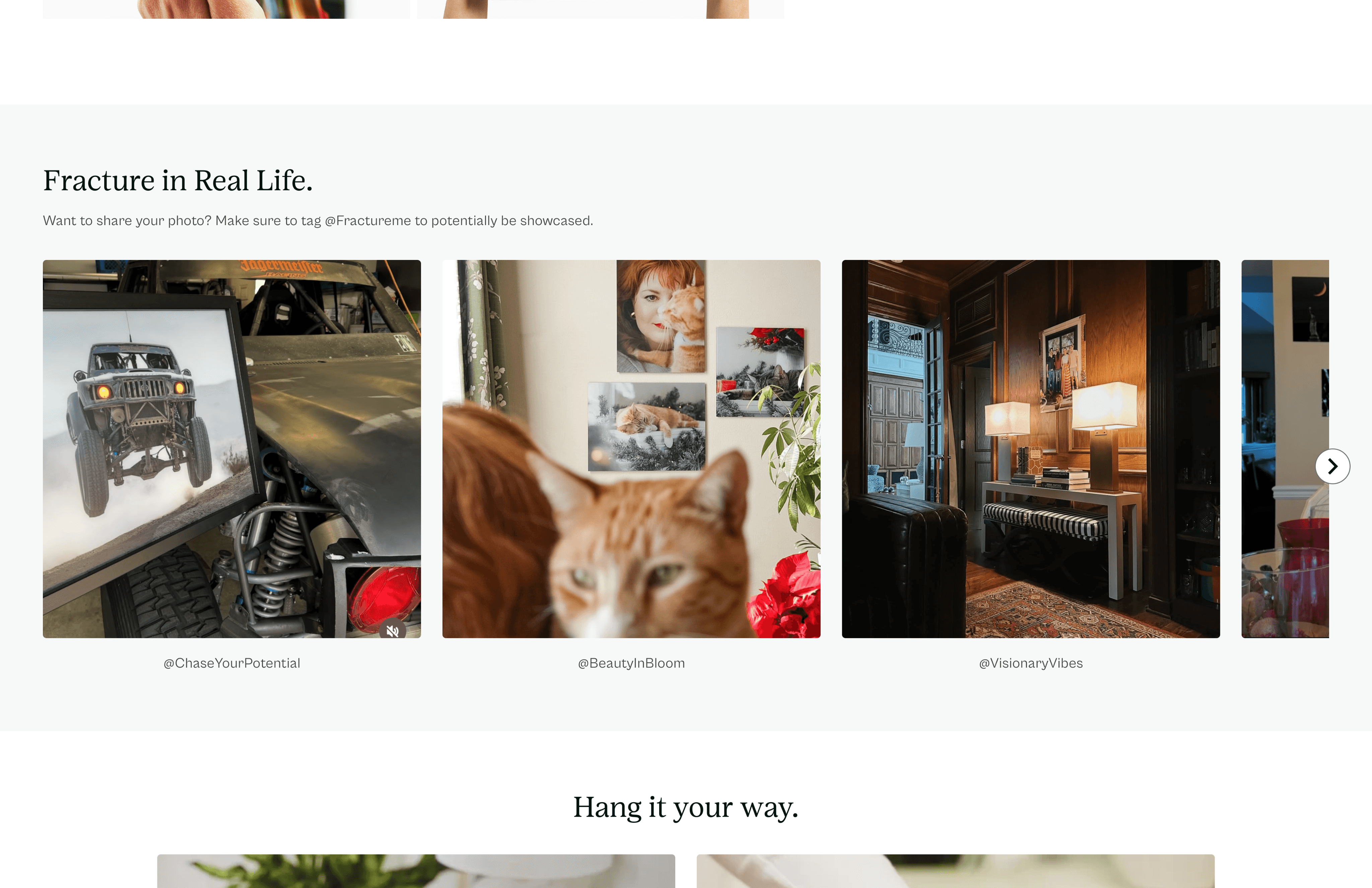Fracture
01. Overview
Fracture aimed to grow by targeting a new user segment, but these users were not converting. I was brought on to help solve this. In this case study, I detail how I influenced strategic decisions, navigated resource constraints, and addressed research blind spots to arrive at the final solution which increased new customer conversion rate by 4%.
Role
Solo Product Designer (In House)
Team
1 product manager • 5 Developers
UX Methods
Stakeholder Interviews • Data Analysis • User Testing • A/B Testing • Design Workshops • Competitive Analysis • Wireframing
Industry
E-Commerce
Product Type
Website
Year
Launched 2025
02. Challenge & Opportunity
The Single Print Photo Customizer was a multi-step process that helped users create a custom glass print.
Recently, the flow went through a redesign. At the time we were re-platforming and rebranding. This created an opportunity to add new features to the first step of the funnel (The product display page - PDP for short). Despite my push for a gradual rollout, the business was prioritizing speed, so we decided to implement everything all at once. Unfortunately, this negatively impacted conversion.
Hypothesis: The changes led to two key problems.
03. Discovery
These conversations gave me hypotheses from various teams. This helped shape my research goals, questions, and blind spots, which in turn informed my research plan.
Research Plan
04. Defining Success
Marketing felt that our current experience for buying multiple prints wasn’t intuitive. They wanted to focus on a product called gallery walls (above) because their belief was that new customers preferred buying multiple prints, not just one. This was the opposite of what I found in my research.
Definition for Success (KPIs)
Argument for Gallery Walls
In marketing channels, ads with gallery walls outperformed ads with just single prints.
Argument Against Gallery Walls
There was a high onsite bounce rate and abandonment rate for gallery wall products.
05. Defining The Problem
Due to limited bandwidth, I couldn’t prototype both team’s ideal flows. So I ran an unmoderated comparison test on competitor flows similar to the ones we aimed to emulate.
